Two more vintage Mossman acoustics get the superhero treatment – a neck reset, refret, custom pick guard, and a new brace.
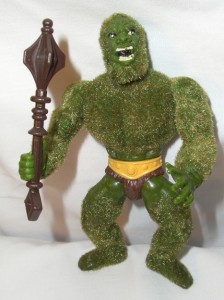
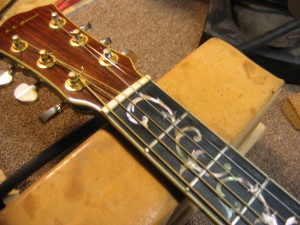
Not long after posting photos of our previous Mossman neck reset, we received two more Mossman guitars that needed the same treatment, but with an extra necessary step. Since they received identical work, the photos in this post will jump between the two guitars. You’ll see them receive neck-resets, re-frets and that extra step – the addition of a brace that was missing in the original design. The guitar in that previous post was made a few years after these and by that time the design flaw had been remedied. After years of not seeing this company’s guitars, it was interesting to see a number of them arrive so close to each other.
In the early 1970’s, Mossman guitars experimented with an internal bracing pattern that was intended to reduce mass and increase volume. The company’s guitars from that period were built without a large spruce brace or strut that is traditionally placed above the sound hole. In its place were two tiny braces and a pair of mahogony “feet” that protruded lengthwise from the head block (the head block is a block of wood inside the guitar where the neck is attached.) In the photo below, we’re looking through the sound hole at a mirror aimed up at the feet. Guitar repairmen before us have dubbed this Mossman condition “The Agony Of The Feet.” The new brace will go between the two skinny ones.
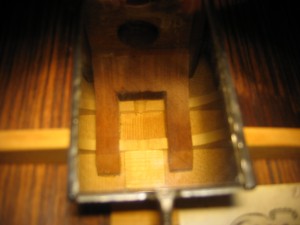
Above, you can see that the two skinny spruce braces that pass underneath the feet are tapered down to almost nothing, then notched in the middle (to accommodate a truss rod wrench.) Not a whole lot of strength there. As a result, once the guitar hits 30/35 years the neck has shifted substantially – raising the action and making a neck reset necessary and long overdue. A quick check of the bass side action shows it to be more than 5/32″ – substantially higher than we’d like. The bridge saddle was too low to bring down any further, so a neck reset is in order.
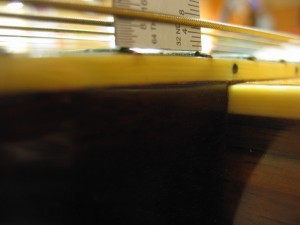
Like lots of 30+ year old guitars, this one will also need a new pickguard.
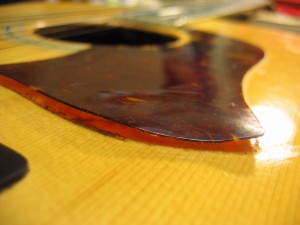
First we heat the fretboard tongue, loosening the glue that holds it to the top surface. These guitars used a simple two-bolt neck joint rather than a dovetail, so we don’t need to steam off the entire neck.
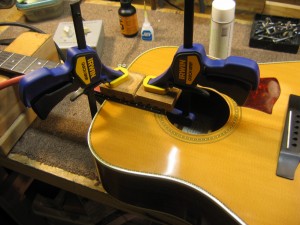
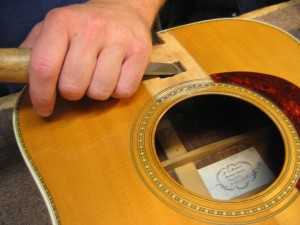
With the neck off, Dan chisels a hole between those two skinny braces. Through this hole, he’s able to cut through the “feet,” creating a space big enough to accommodate a custom-made full size brace.
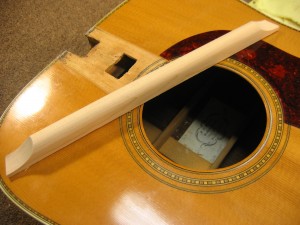
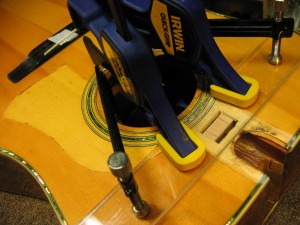
Here’s that new brace being glued into place. Looks stronger already!
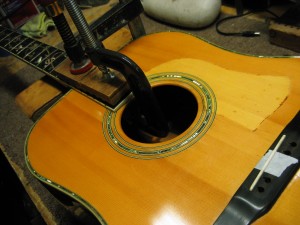
After resetting the neck angle and re-installing the neck, it’s time to spruce up the fretboard. After 35 years of wear and tear, it’s ready for a face-lift. Yuck.
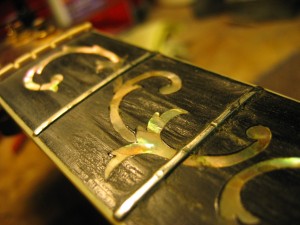
Dan removes the old and pitted frets, then levels the fretboard to create a true and even surface for the new frets.
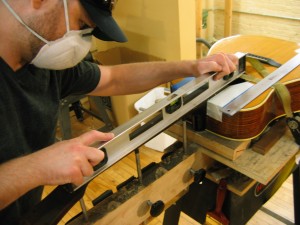
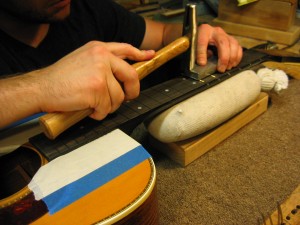
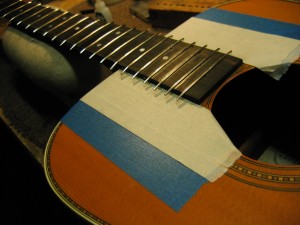
After carefully hammering each fret into place by hand, he trims and shapes the fret ends and dresses the new fretboard.
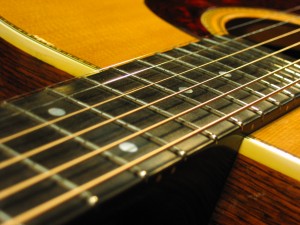
Here’s a look at the new bone saddle – tall enough for many more years of playing.
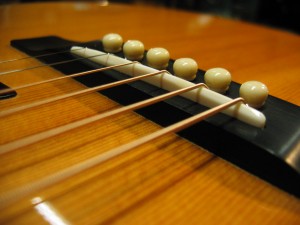
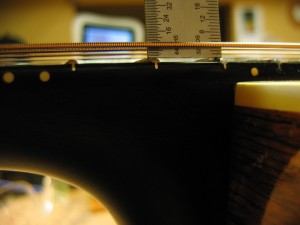
Playing action for both guitars is now low and comfortable.
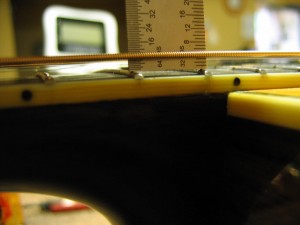
Both of these Mossman guitars sounded truly great when the work was complete. They required an extensive restoration, but the owners both agreed it was worth the trouble and expense.
Another Mossman attack averted.

I saw your notes on repair mossmans.
I own a couple of them.
This was a great post and really interesting. I was first exposed to Mossman guitars at the Sound Post in Evanston.
I own a 1977 Mossman Winter Wheat so I was interested in seeing the photos of the work you did.
My Mossman had a neck reset a couple of years back done by Joe Konkoly of Elderly Instruments. Great guitars.
I am looking forward to visiting your shop and bringing a couple guitars along for you to look over.
LJ
I have what Stewart described as the next to the last guitar he ever made. It is a Flint hills with only two signatures on it. I need a neck reset and fret work etc. could you give me a quote?
Thanks, Rob
Rob, I’ll send an estimate to your email!
The problem of the Agony of De Feet was that the feet did not touch the top. We used plywood molds, and they compressed with use, tilting the neck block down. We put the top on last, and nobody noticed, for an embarrassingly long time, that the neck end of the box looked slightly heart shaped, and the feet angled away from the top. Properly installed, the Mossman neck block worked fine. Adding a brace to one with no “Agony” is not necessary. Most Mossmans were made before the mold failures or after we found and fixed the problem. The first way the “Agony” was addressed was by adding wedges to fill the gap ‘twixt the foot and the top. Now I remove the neck and rout out and replace the spruce under the tongue, so that the new wood fits squarely onto the, now flattened, feet. Remember to rat tail a route for your truss rod wrench. I made a guitar to take with me when I left the Mossman shop in 1975. I went through the line and did every job myself. I have played that guitar long and hard and have never needed to reset the neck (although it will need it soon, but 41 years is good by any standard). Also, the Mossman mortise and tenon neck joint was glued in. We were the first company to use bolts, but we thought that the neck was held on by the glue and that the bolts were just for alignment and clamping. The original system for removing a Mossman neck was to remove the fingerboard tongue and slide hot knives down the tenons. Now I dissolve the PVR with vinegar (steam blows water through the bolt holes and stains the label. We realized sometime in the late 80s that the bolts would hold the neck on without glue, like all modern guitars. If you got those necks off by just removing the nuts, they had been off before. Thank you for your time.